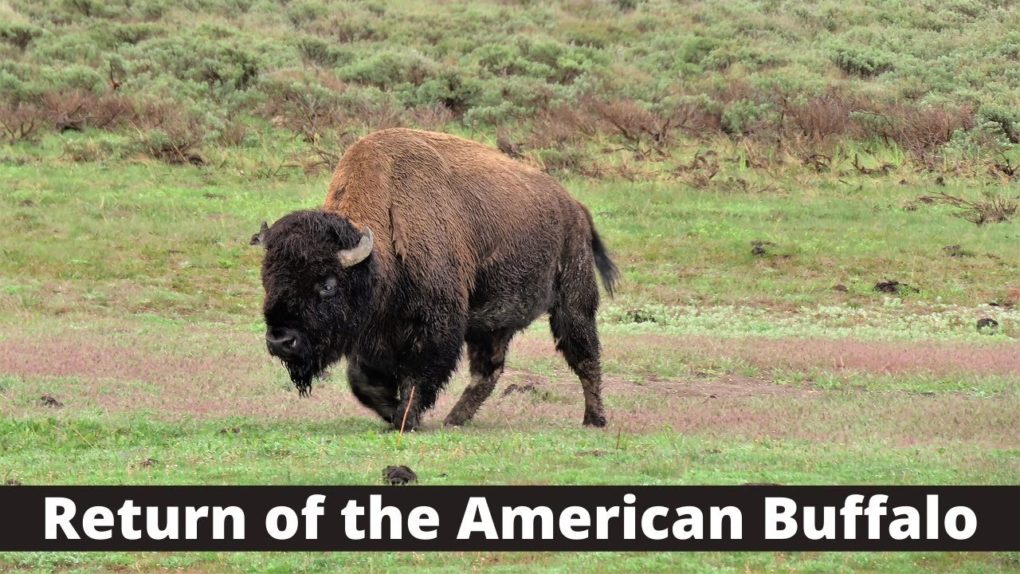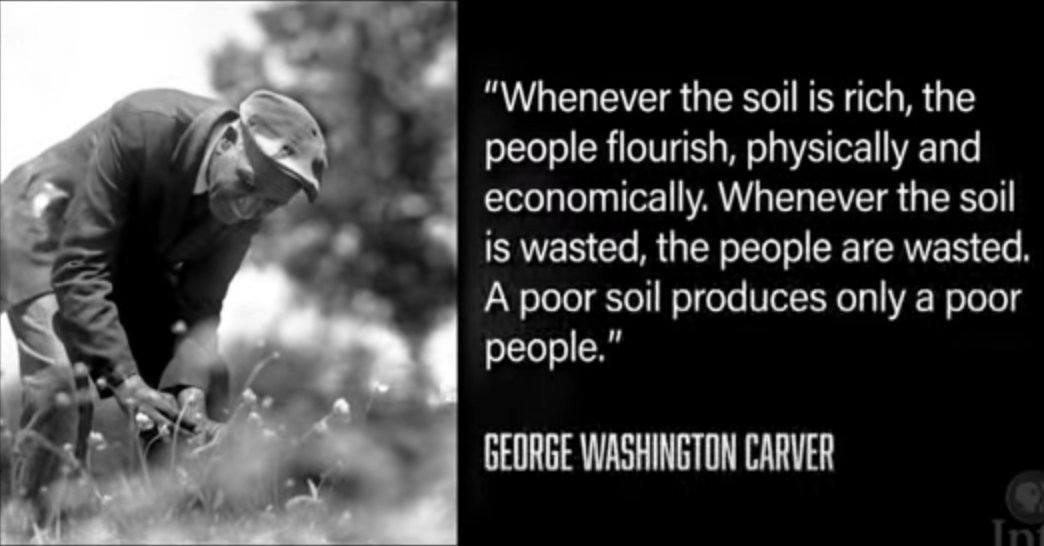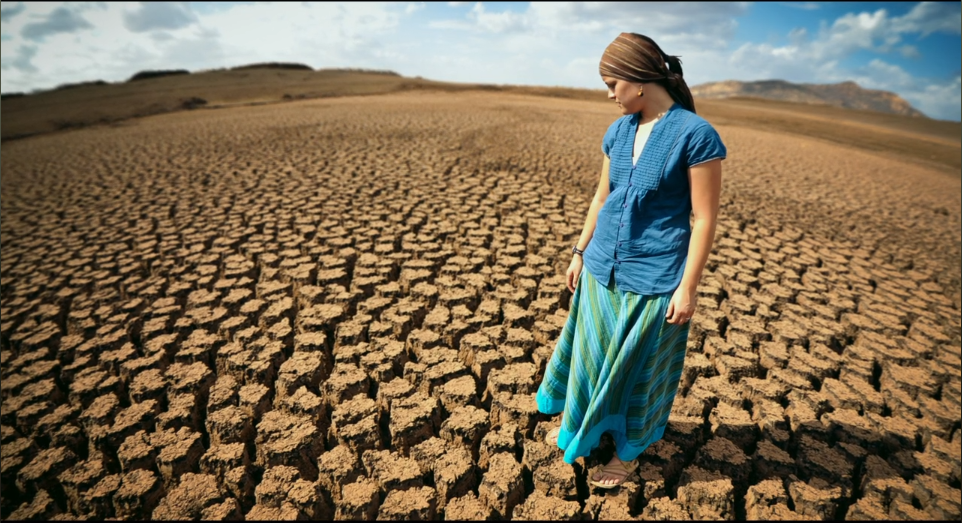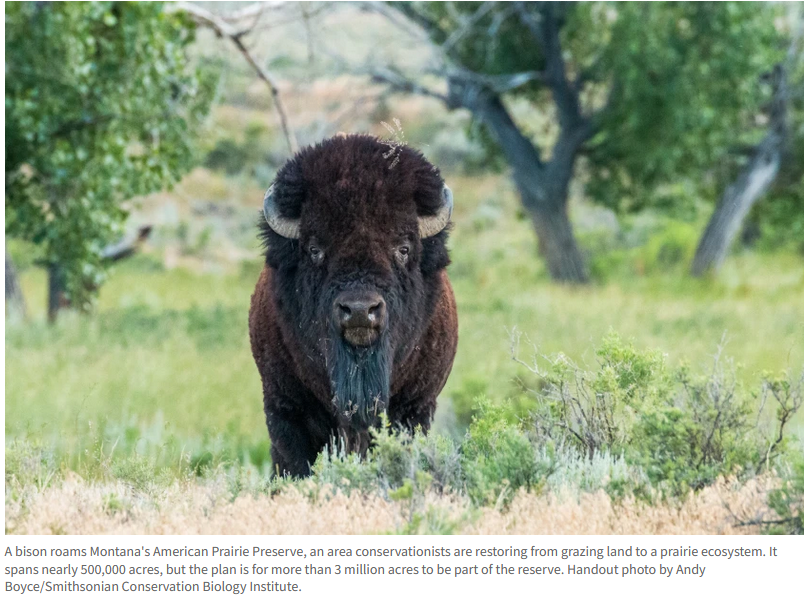How Bison Are Saving America’s Lost Prairie
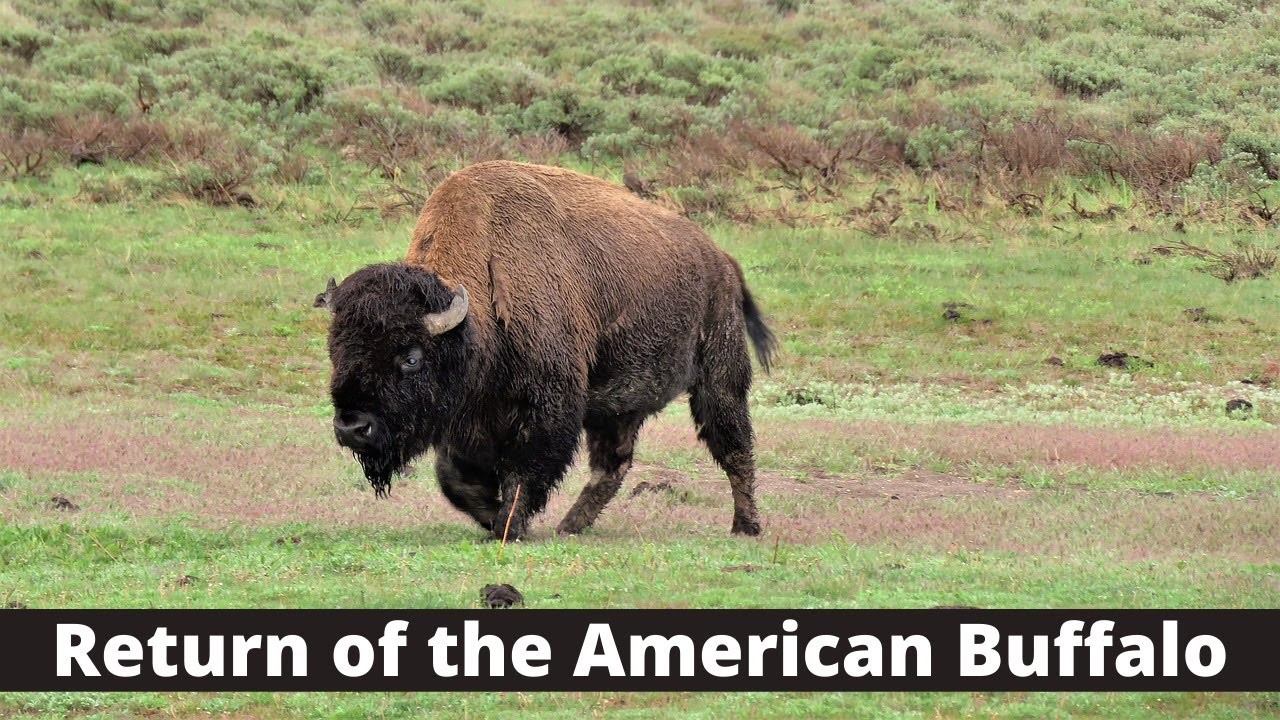 By Neenah Payne
By Neenah Payne
Americans and Europeans are beginning to understand now the critical role that “keystone” animals like the buffalo, wolf, and beaver play in our own health and survival.
The buffalo and bison meant everything to the Sioux who used every part of the animal. Buffalo meat was food. Hides were clothing, bedding, and shelter. Bones and horns made tools. Sinews were used for bowstrings and laces, and dung for fires. Hooves could be ground for glue, and brains were used in the tanning process for hides. Extra meat was by dried as pemmican. Between the 1850s to the 1880s, White settlers and miners almost completely destroyed the buffalo herds. They were encouraged by the US Army to overhunt the herds to undermine Indian resistance. Once numbering 60 million, only a handful of buffalo and bison remain today.
Return To Nature In The COVID Era says
“Before being hunted down by humans, the wolf was the most widely distributed land mammal in the world except man. For example, the gray wolf’s range has been reduced by one-third. Their decreased population has had serious implications for their local environment. Indeed, it is for this reason that in areas where wolves became extinct, authorities have taken steps to reintroduce them, as was the case in Yellowstone National Park.”
Why We Need Beavers — Nature’s Carpenters and Plumbers explains that beavers are ecosystem engineers second only to humans. They help protect against droughts, floods, and wildfires and provide habitats for about 80 species including mammals, fish, and birds while cleaning rivers. How the Eager Beaver Helps Protect the Planet says,
“Before the European colonization of North America, there were likely hundreds of millions of beavers. Many Indigenous communities revered them as keepers of water and some had strict policies against killing beavers. But the value of beaver pelts and oil—as fashionable fur hats and perfumes in Europe—lured trappers across the continent and beavers were nearly eliminated from the landscape as a result of heavy exploitation. In the process, our waterscapes became less complex, less resilient, and less able to support diverse plant, animal, and human life. “
Why Wolves Are Good For The Ecosystem
Why Are Wolves Good for the Ecosystem? points out:
“As a large predator, wolves play a key role in regulating populations of other animals. Without them the balance in those ecosystems is upset. A 2001 study, for example, found that when wolves went extinct in Yellowstone, the moose population increased by five times and ravaged the woody vegetation which birds need to nest. As a result, several bird species were eliminated in the park.
What is more, wolves benefit other animals, like scavengers. Because they hunt down their prey, wolves leave leftovers behind that are the key source of food for a number of other species such as ravens, magpies, bald eagles, golden eagles, weasels, mink, lynx, cougar, grizzly bear, chickadees, masked shrew, great gray owl, and more than 445 species of beetle. This is the most impressive list of species that depend on wolves! But wolves’ leftovers also benefit the soil. For example, studies have found that wolf-killed elk carcasses dramatically enhance the levels soil nutrients and nitrogen.”
Medicine of the Wolf explains how re-introduction of wolves in Yellowstone National Park after 65 years radically enhanced the ecosystem in several ways! Wolves help keep forests and streams healthy which allows many other animals to return and thrive.
Gray Wolf – Yellowstone National Park (U.S. National Park Service) (nps.gov)
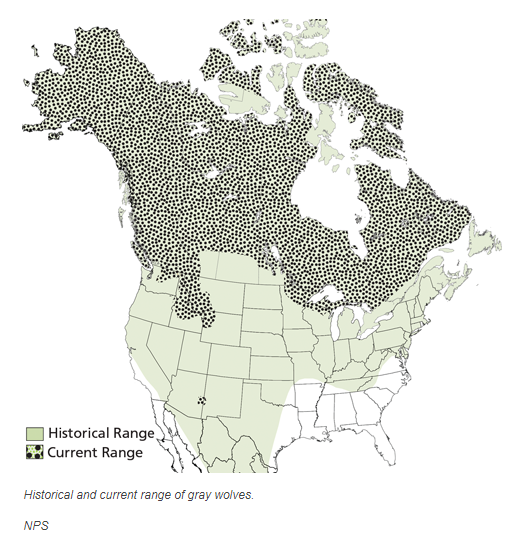 Return of the American Icon
Return of the American Icon
Restoring an American Icon – B&C Impact Series
“Bison are symbols of the American West, and market hunting nearly wiped them from the planet. The story of their near-extinction and then of their restoration thanks to members of the Boone and Crockett Club is the story of the first animal reintroduction in North America.”
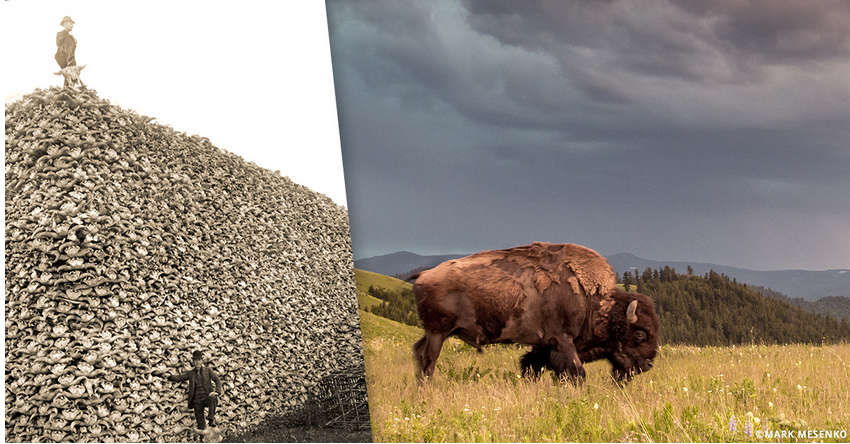 Left, a photograph from 1892 of a pile of bison skulls waiting to be ground for fertilizer or charcoal. At right a bull grazing at the National Bison Range near Charlo, Montana.
Left, a photograph from 1892 of a pile of bison skulls waiting to be ground for fertilizer or charcoal. At right a bull grazing at the National Bison Range near Charlo, Montana.
“When at ease, their undulating herds grazed over the landscape like a soft, warm breeze in April. When spooked, their hooves shook the earth of a thousand thunders. Prior to the 1700s, waves of bison roamed from Mexico to the Northwest Territories and from eastern Oregon nearly to the Atlantic coast of Georgia. And once the West was “opened” by railroads, they were sitting ducks—all 30 to 60 million of them.
They were killed for their hides, tongues, meat, and for fun. Destroying the bison also destroyed the lifeblood of Native Americans. Market hunters could get three dollars for a buffalo skin in Kansas. A full buffalo-hide coat would fetch up to fifty dollars. Railcars made shipping the heavy hides back East easy. The scale of the slaughter was exponential thanks to new and ever-improving rifles.
By the late 1800s, only a few small herds of bison remained in North America, and many of them were privately held. Herds in Yellowstone had dwindled to less than two dozen. Americans had heard stories of bison across the Great Plains, yet few had ever actually seen a live one. That would change when early Boone and Crockett Club member William T. Hornaday decided to make it his life’s work to insure that bison would not be lost forever.”
Bison or Buffalo?
Bison are found in Yellowstone National Park and western North America. Buffalo live in Asia (water buffalo) and Africa (Cape buffalo). The video below explains that bison are “ecosystem engineers” who helped restore the prairie.
How Bison Are Saving America’s Lost Prairie
“American prairies were once home to as many as 60 million bison. But when ranching and agriculture displaced elk and bison from the prairies, America’s grasslands all but disappeared. Now, the Nature Conservancy manages the largest remaining protected tract of tallgrass prairie in the entire world, the Joseph H. Williams Tallgrass Prairie Preserve in northeastern Oklahoma.
This 40,000-acre expanse is much more than grass. It is a biologically rich habitat that harbors a diverse collection of plant and animal species—more than 750 species of flora and 80 different mammals. This prairie is also a vital component in nature’s fight against climate change.
The key to keeping the prairie healthy? Bison. The Nature Conservancy reintroduced 300 bison to this prairie in 1993, and the herd has grown to more than 2,000 animals today. They graze on the majority of the preserve, playing an important part in enhancing the prairies. Combined with a method of land management known as patch burning—preserve managers torch about a third of the acreage every spring, summer, and fall, mimicking ancient seasons of fire—the tallgrass prairie is thriving.”
Allan Savory: How Cows Can Save The World shows that Scientific American warns that the world’s remaining top soil will be gone within 60 years. So, unless we find a way to save our soils, we have just 60 harvests left. Industrial chemical agriculture is destroying our soils and our health. Since it ramped up in the 1970s, we’ve lost one third of the Earth’s topsoil.
When soils are damaged, the soil turns into dust in the process is called “desertification”. About 60% of the world is turning into deserts — pushing 40 million people every year off their land. By 2050, it’s estimated 1 billion people will be refugees of soil desertification. The soil, plants, animals, people, and the climate are connected in a fundamental and astonishing way only recently fully understood.
Plans have been proposed that misunderstand the roles of carbon in life and cows in agriculture. Solving our urgent life-threatening problems requires that we sort through the divisive and highly-politicized confusion. Bill Gates is proposing fake meat on the theory that methane from cows is contributing to the problems and he wanted to block out the sun. A system of carbon taxes has been proposed to theoretically punish industries and countries that produce too much CO2.
However, the film Kiss The Ground explains,
“‘When it comes to the role of carbon in our world, there’s a bit of confusion. Carbon isn’t bad. In fact, it’s the basis for all life on Earth. We’re built by carbon. The soil microbes run by carbon. Carbon is a driving engine. It runs the system. We breathe carbon dioxide out and plants breathe it in.’ John Wick, co-founder of Marin Carbon Project says, ‘There’s a tendency right now for us to be at war with carbon. Carbon’s the “bad guy” and I think that’s a lost opportunity. Carbon’s the good guy. We’re carbon. I’m 16% carbon and all of it came from eating vegetation.'”
Ecologist Allan Savory shows in his viral Ted Talk linked to further below that cows are THE KEY to restoring our soils, providing clean water, feeding the world, protecting the oceans, and preventing drought and floods which drive political unrest and mass migration to cities and other countries. Understanding this profoundly different perspective is key to preventing the Sixth Great Extinction.
Allan Savory: Grazing Animals Is The ONLY Way To Restore Land
Allan Savory, Founder, Holistic Management, warns: “Poor land leads to poor people which leads to social breakdown”. Savory’s 2013 Ted Talk is among the TOP 100 MOST-WATCHED TED TALKS. It has been seen by over 8 million viewers and is going up by thousands a day. Savory explains why livestock — now used on five continents on 37 million acres — are the ONLY protection for soils and water and the ONLY way to save our civilization. Also see How To Green The World’s Deserts and Reverse Climate Change.
Savory said in his talk at Harvard linked to further below that this Ted Talk overcame 50 years of academic opposition to these ideas. He explains that when public opinion changes, government policy changes. So, you can help shift policies by sharing this Ted Talk.
Allan Savory’s Holistic Management: Key To Soil Restoration
Running out of Time | Documentary on Holistic Management
Allan Savory explains how he used Holistic Management to transform his land in Zimbabwe.
In 2010, Savory and his wife Jody Butterfield founded the Savory Institute in Boulder, Colorado to promote restoration of grasslands worldwide. Today, Holistic Management is practiced by tens of thousands of people around the world with about 40 million acres under Holistic Management.
Savory Institute:
“Loss of grasslands leads to climate change, floods, droughts, famine, and worldwide poverty. It’s our mission to promote large-scale restoration of the world’s grasslands through Holistic Management. Holistic Management is a process of decision-making and planning that gives people the insights and management tools needed to understand nature: resulting in better, more informed decisions that balance key social, environmental, and financial considerations.”
Holistic Management Textbook Holistic Management Handbook
Book: Cows Save the Planet
Amazon says:
Kristin Ohlson makes a passionate case for “our great green hope”—a way in which we can not only heal the land but also turn atmospheric carbon into beneficial soil carbon. Thousands of years of poor farming and ranching practices—and, especially, modern industrial agriculture—have led to the loss of up to 80 percent of carbon from the world’s soils. Ohlson introduces scientists, farmers, ranchers, and landscapers who are figuring how to build healthy soil, which solves myriad problems: drought, erosion, air and water pollution, and food quality.
Ohlson says Parker Bosley, a restaurateur, told her, “Carbon farming. That’s the new thing.” He said there was a new movement among small farmers. Sometimes they call themselves soil farmers or microbe farmers, aware of the billions of tiny creatures that were at work in the soil. Sometimes they call themselves carbon farmers, knowing carbon is making their soils richer, moister, and darker.
Ohlson says, “I was stunned to learn about life in the soil, a vast underground kingdom of microorganism without which life as we now it wouldn’t exist. Plants use sunlight as energy. They pull carbon dioxide out of the atmosphere. They turn it into a carbon fuel to grow. They send 40% of that carbon fuel down to their roots. Plants are feeding soil microorganisms carbon and the soil microorganisms are bringing plants mineral nutrients. Those microorganisms make little pockets in the soil to control the flow of air and water.”
Dr. Kristine Nichols (video), Chief Scientist, Rodale Institute, says,
“In every handful of healthy soil, there are more organisms than the number of people who have ever lived on Planet Earth! Those organisms are processing organic matter in the soil and putting the nutrients into a form the plant needs.”
Regenerative Organic Agriculture – Dr. Kristine Nichols, Rodale Institute from KCSAAC on Vimeo.
In Soil Health – Dr. Kristine Nichols, Rodale Institute, Dr. Nichols says,
“All our soils that are under chemical conventional agriculture are almost completely devoid of microorganisms.” Spraying the soils with toxic chemicals kills the microbes we need to give us health and to pull the carbon from the atmosphere. The film points out, “Taking care of the microbes in the soil is critical for human health”.
Cows Save the Planet: And Other Improbable Ways of Restoring Soil to Heal the Earth shows that nature is designed to be self-healing. It explains that Allan Savory’s Holistic Management shows the central role of pasture-fed cows in saving our soils, feeding the world, providing clean water, and restoring the oceans.
Allan Savory’s Regenerative Agriculture
Meet Allan Savory, the Pioneer of Regenerative Agriculture | Successful Farming
“Spencer Smith wades through a pasture on his California ranch. A few years ago, these fields were parched and far less vigorous, but they rebounded quickly under regenerative management. If degraded grasslands were turned around on a large scale, the Savory Institute estimates enough carbon could be sunk into the soil to lower greenhouse gas concentrations to preindustrial levels in a matter of decades.”
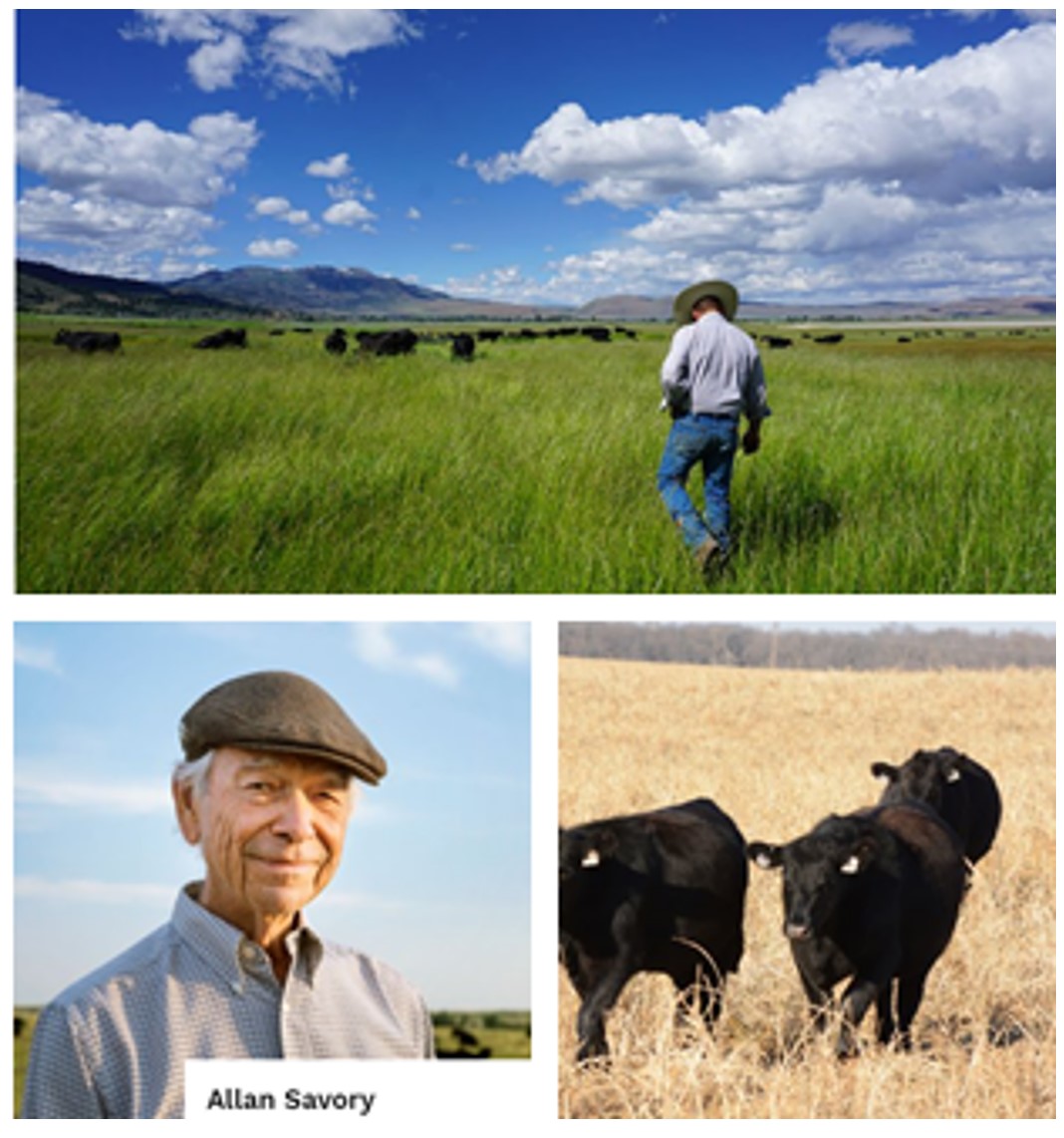 Wired: When the Bison Come Back, Will the Ecosystem Follow?
Wired: When the Bison Come Back, Will the Ecosystem Follow?
“An effort to bring wild buffalo to the Great Plains aims to restore one of the world’s most endangered landscapes and increase climate resilience….Research suggests there were 30 million to 60 million bison in North America in the 1500s. Four hundred years later, roughly 1,000 bison remained, a result of government policies that encouraged killing off the animals, largely to help defeat Indigenous inhabitants and force them onto reservations.”
Chase Reynolds Ewald’s new book on bison lost and found
“Brought back from the brink of extinction, the bison today―with its rugged, primitive build, its remarkable speed and hardiness, its primeval wooly hide, and its sheer strength―is an icon as distinctly American as the bald eagle.”
How the noble buffalo could save America from ecological devastation
“After years of public support, President Obama signed the National Bison Legacy Act into law in 2016 – officially making the American bison the national mammal.”
Bison help prairie get back to nature
At Montana’s American Prairie Reserve, conservationists look to re-create an ecosystem that has nearly disappeared.
Neenah Payne writes for Activist Post and Natural Blaze
